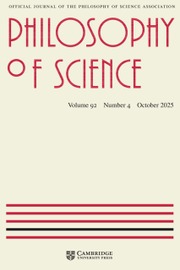No CrossRef data available.
Article contents
Further Reflections Based on the Black–Scholes (B-S) Model
Published online by Cambridge University Press: 16 September 2024
Abstract
The Black–Scholes (B-S) model is considered by the academic environment one of the greatest achievements of financial economics. Yet it brings with it some conundrums. The model is often used in a manner that contradicts one of its assumptions, and its predictions are not supported by market reality. Here we address, from the perspective of philosophy of science, an additional issue related to this model: the distinction between its explanatory and predictive capabilities.
- Type
- Discussion Note
- Information
- Copyright
- © The Author(s), 2024. Published by Cambridge University Press on behalf of the Philosophy of Science Association


